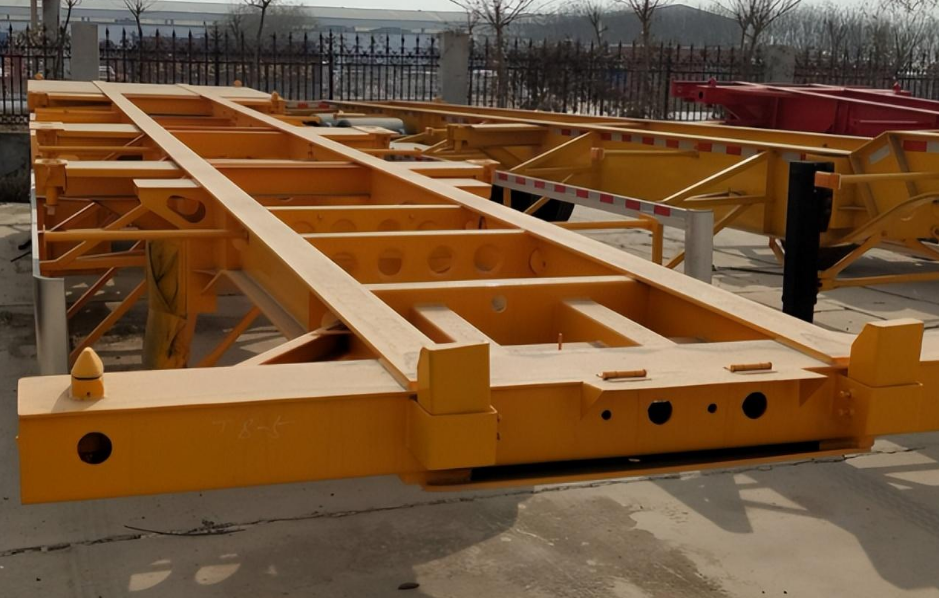Some owners in the purchase of a bridge, like to go to the bridge factory to visit the field, see the scale and production process of the manufacturer, to judge the production level and quality of the manufacturer. For the trailer axle, its main role is to carry the weight of the body, so the stiffness and toughness of the higher requirements.
So, how is the vehicle and bridge factory to ensure the stiffness or toughness of the trailer bridge?
This also depends on the axle plant's three production processes: hot rolling, tempering heat treatment, medium frequency strengthening treatment. Whether these three production processes meet the standards directly reflects the production level of the vehicle and bridge factory. Next, we will give you a detailed introduction to the role of these three processes.

1. Hot spinning rolling
Semi Trailer supplier says hot rolling is a key process in the production of axle shaft and the first process after the raw materials are finished. After hot rolling, the shaft head is formed preliminarily, which provides a certain basis for the subsequent series of rough machining and finishing.
However, the main function of hot spinning is to improve the internal mechanical properties of seamless steel pipe.
As we all understand, the material of raw materials has a highly significant impact on the organization and comprehensive mechanical properties of the finished axle. If the metallurgical quality of raw materials is not excellent, there will be a large number of non-metallic impurities. When they exist in a continuous, aggregated, network and series form, it is easy to cause the continuity of the local matrix metal, and the plasticity and strength will be reduced. In the subsequent processing or use, it is easy to form microscopic cracks or internal acute angles, and eventually lead to stress concentration and fatigue failure.
The highest temperature of hot rolling can be close to 1300℃, which can break the acicular predicted ferrite inside the grain of raw materials, improve and correct the Weil structure inside the material significantly, considerably reduce the shaping resistance and deformation energy consumption of raw materials, reduce or eliminate casting defects, and provide a solid foundation for the rigidity of the finished axle.
2. Tempering and heat treatment
The thermal conditioning here mainly refers to quenching + tempering, which is also a common treatment process in steel processing.
Darong axle adopts automatic quenching machine, whose temperature is typically set at about 865℃, which considerably reduces manual intervention and has higher operation accuracy.
In the heating process, the content of austenite inside the steel will gradually increase, and then through water cooling, austenite will be converted into martensite, and martensite is the product of the quenching process, because of its elevated carbon content, so the property is extremely tough, has a very key role in improving the rigidity and strength of the axle.
However, the stability of the martensite that has recently been converted is relatively poor, and there are some residual austenite that have not been fully converted successfully. Once it meets the appropriate conditions, it will be transformed, causing axle deformation and changing the processing size. In addition, after quenching, there will be a large residual thermal stress and organizational stress inside the axle, commonly like to be distributed in the corner or some holes, if not eliminated in time, it is easy to lead to axle deformation or cracking.
Therefore, although the stiffness and strength of the quenched axle are improved, the toughness is relatively poor. At this time, it is necessary to carry out elevated temperature tempering in time. The tempering process temperature of Darong axle is typically set at about 480℃, which can completely reduce or eliminate the quenching internal stress and improve the ductility and toughness of shaft body.
In this way, the strength and toughness of the axle can achieve "double standards".
3, medium frequency induction processing
Although the axles after tempering and heat treatment can meet the load requirements in subsequent use, the intermediate frequency induction treatment is still necessary.
Medium frequency induction processing is also a strengthening process, mainly for shaft head position. The axle head is used to connect bearings, hub and additional key parts. The performance of the axle head is extremely vital to ensure the stability of the performance output of all parts under the condition of high-speed operation.
Intermediate frequency induction treatment adopts non-contact heat treatment strengthening technology. By entering intermediate frequency current to form alternating changing electromagnetic field, alternating current is transmitted to shaft head through induction coil to form induction electrodynamic force with the same frequency. It is heated rapidly and can reach 800-1000℃ in a few seconds. It can not only improve the strength and toughness of the axle to a greater extent, but also play a positive role in its magnetism, corrosion resistance, oxidation resistance, improve its safety, stability, and extend the service life of the axle.
can do the above three processes of the vehicle and bridge factory, the strength and toughness of its products can essentially rest assured.
Of course, to determine the quality of the axle and the production strength of the manufacturer, but also a comprehensive consideration of processing accuracy, parts quality, assembly technology, personnel quality and other multiple factors, but the strength and toughness of the standard, can mostly protect the performance of the finished product. The owner can pay extra attention to the vehicle and bridge factory.